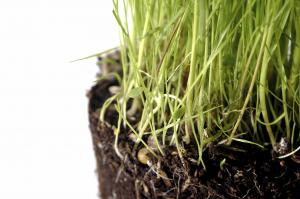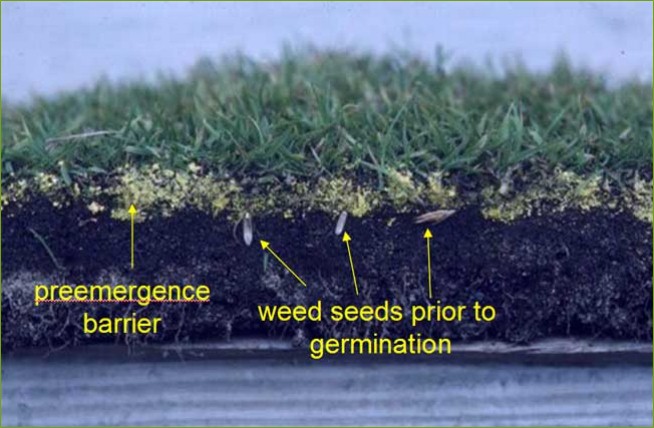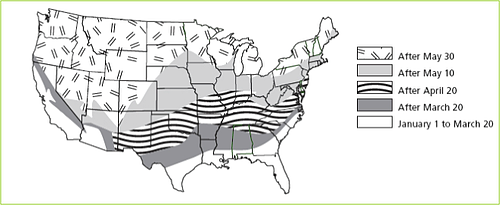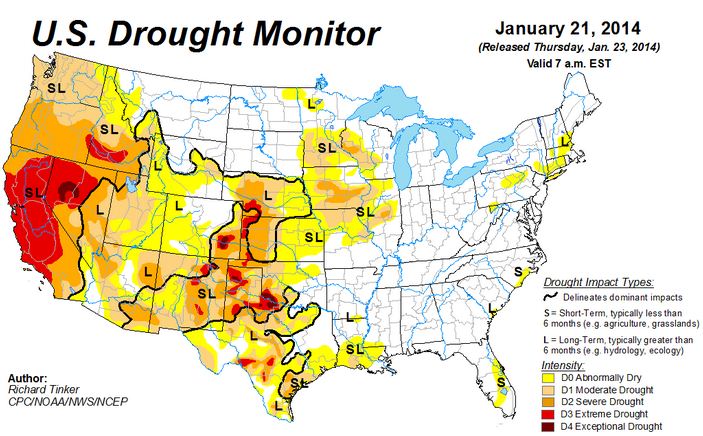 The type of nitrogen used in your fertilizer will directly impact both your costs and the health of the turf. Most turf experts recommend that at least half of a fertilizer's nitrogen content come from slow release sources.
The type of nitrogen used in your fertilizer will directly impact both your costs and the health of the turf. Most turf experts recommend that at least half of a fertilizer's nitrogen content come from slow release sources.
Slow release fertilizer addresses 3 major issues:
1. Plant Health - Humans do not eat one big meal at the beginning of the month. We take in nutrients continuously. Plants and turf should be fed slowly too.
2. Environment - Fertilizers that are 100% soluble (quick release) are prone to runoff and can polute the local water supply.
3. Profitability - Slow release products allow for fewer applications, which translates to lower product cost and labor on an annual basis.
There is a misconception within our industry that slow release means you'll have to wait a long time to see a result, which may cause issues with some clients. But in reality, most slow release fertilizers have a certain percentage of nitrogen that is available immediately, while the rest is released over time.
8 Types of Slow Release Nitrogen to Look For on the Label
May appear on the fertilizer label as: Ureaform, UF, Nitroform
Composition: A chemical combination of Urea and Formaldehyde. No Coating. At least 60% of the nitrogen content is cold-water-insoluble (CWIN).
Duration: Releases slowly over a period of months up to 1 year.
How the nitrogen is released: Primarily through microbial decomposition, so environmental factors such as soil temperature, moisture, pH and aeration affect the rate of release.
Recommended for: Landscaped beds, not turf.
Used in: TurfGro 14-14-14 Plant Pro Plus - Available in CA, CO, ID, OR, & WA
May appear on the fertilizer label as: MU, Nutralene, Slo-Cote
Composition: A chemical combination of Urea and Formaldehyde. No Coating. Between 25%-60% of the nitrogen content is cold-water-insoluble (CWIN).
Duration: Up to 4 months.
How the nitrogen is released: Through microbial activity and hydrolysis (water).
Recommended for: Actively growing turf. Best suited for regions where it's not warm enough to break down coated nitrogen products.
Used in:
•TurfGro 13-5-13 Palm, Tropical & Citrus - Available in AZ, CA, & NV
•TurfGro 14-14-14 Plant Pro Plus - Available in TX
•TurfGro 24-0-9 Summer - Available in ID, OR & WA
•TurfGro 24-2-9 Spring & Summer - Available in CO
May appear on the fertilizer label as: IBDU
Composition: A chemical combination of isobutylaldehyde and urea. No coating. 90% of its total N is water-insoluble (WIN).
Duration: Up to 4 months.
How the nitrogen is released: By hydrolysis (water). Release rate depends on particle size. Temperature, bacterial activity, and soil acidity make little impact, which gives it a consistent, predictable performance.
Recommended for: DOT Erosion jobs and winter fertilizer.
May appear on the fertilizer label as: SCU
Composition: Urea particles coated with a layer of sulfur.
Duration: 9-12 weeks
How the Nitrogen is Released: Each particle rapidly releases its urea once water penetrates the particle's core. Release rate depends on coating weight, application rate, and environmental conditions like temperature and moisture.
Recommended for: Properties with calcarerous soil, mainly in the Southwest.
May appear on fertilizer label as: PCU, Polyon, Duration, Extend
Composition: Urea particles coated with a semi-permeable polymer membrane.
Duration: 2-6 months
How the nitrogen is released: Through the membrane. Release rate is dictated by the thickness of the coating and temperature. The warmer the temperature, the faster the release.
Recommended for: Turf. Can be expensive, but it is the most technically advanced slow release fertilizer with a highly predictable release rate.
Used in: TurfGro 24-3-12 Extended Feed - Available in CA
May appear on fertilizer label as: PCSCU, PSCU, XCU, TriKote
Composition: A hybrid product that utilizes a primary coating of sulfur and a secondary (outer) polymer coat.
Duration: 10-14 weeks
How the nitrogen is released: First by diffusion through the polymer coating, then by capillary action in the sulfur coating as water dissolves the urea core. Release rate is dependent mainly on temperature (warmer temperature means faster release), but also on microorganisms and water.
Recommended for: Turf. Excellent uniformity in nutrient release, which translates to reduced surge growth and extended feeding. Better value than products with single coatings of either sulfur or polymer.
Used in:
•TurfGro 8-2-10 Palm & Plant - Available in FL
•TurfGro 15-0-15 with 50% XCU - Available in FL
•TurfGro 23-0-10 Spring & Summer - Available in ID, OR & WA
•TurfGro 24-0-9 Summer - Available in ID, OR & WA
•TurfGro 24-2-9 Spring & Summer - Available in CO
•TurfGro 24-5-11 Spring & Summer - Available in AZ, CA & NV
•TurfGro 28-0-10 Spring & Summer - Available in TX
•TurfGro 30-3-6 High Nitrogen - Available in ID
Composition: Urea with Dicyandiamide and NBPT - a stabilized nitrogen with no coating.
Duration: Up to 16 weeks.
How the nitrogren is released: UMAXX & UFLEXX have an enzyme inhibitor that allows ammonium to bind with the soil until it is needed by the plant. More nitrogen says in the stable ammonium form, so it is available to the plant for weeks and is not prone to leaching or volatilization.
Recommended for: Turf that needs a quick green-up without excess growth or burn. Works well with high pH calcareous soils (common in the SW).
Used in: 28-3-10 TurfGro Spring & Summer - Available in TX
Composition: Very wide range of products, from sludge material to very high quality feather, bone and blood meals.
Duration: Varies by type.
How the nitrogen is released: Depends on the type of organic inputs used in the fertilizer. Ask your Horizon representative about local organic fertilizer options.
Used in:
•TurfGro 8-0-4 Organic with Mycorrhizae - Available in ID
Need help creating a fertilizer program or selecting the right fertilizer?
Contact your local Horizon store. We're happy to help!


 When you're developing a weed control strategy for a property, an important detail to impress upon your customer is that it's not possible to completely eliminate weeds with a single application or cultural practice. There is no silver bullet that kills all weeds and an effective program adjusts to the needs of the property on a seasonal or annual basis.
When you're developing a weed control strategy for a property, an important detail to impress upon your customer is that it's not possible to completely eliminate weeds with a single application or cultural practice. There is no silver bullet that kills all weeds and an effective program adjusts to the needs of the property on a seasonal or annual basis.

